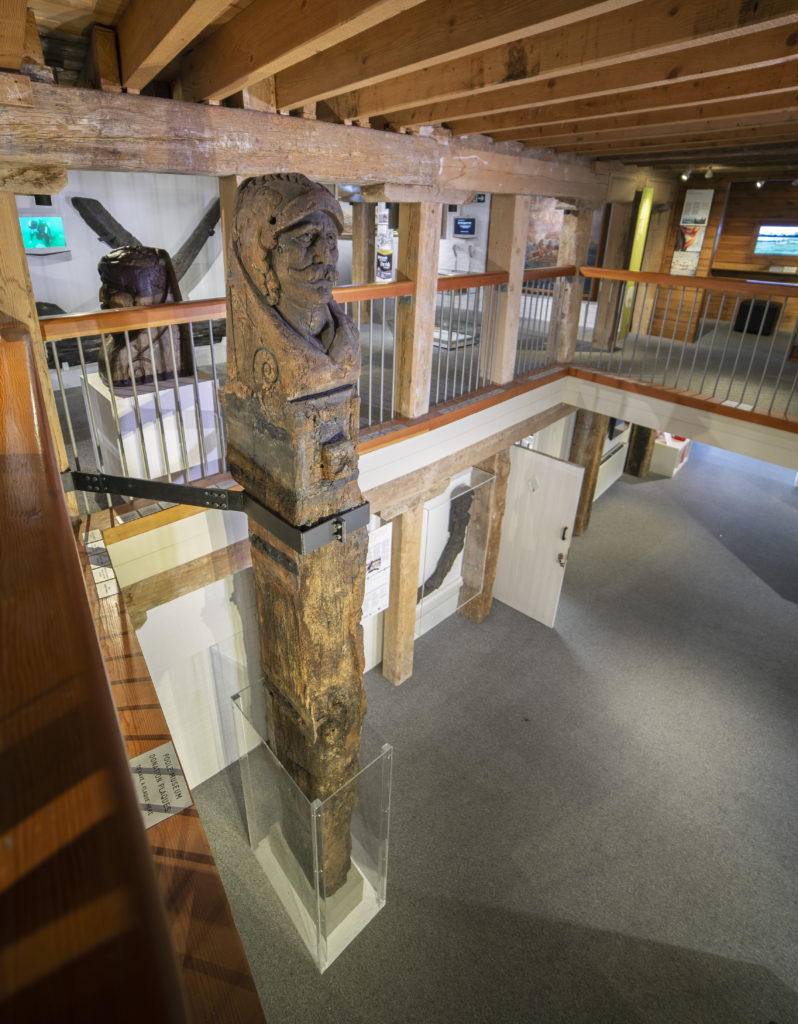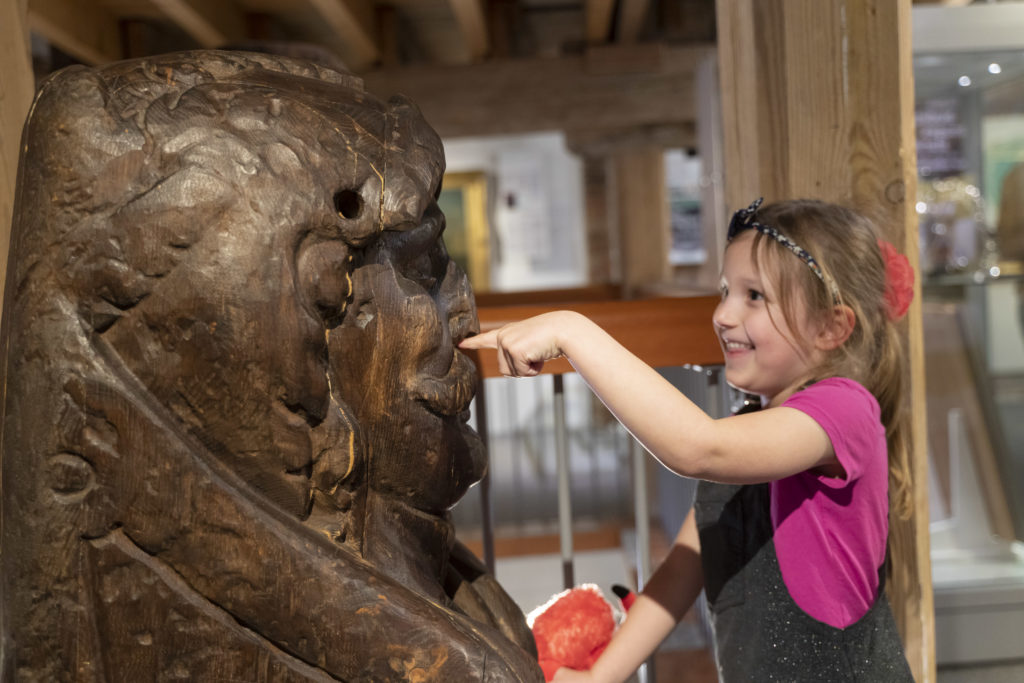Swash Channel wreck
Featuring the magnificent mustachioed man!
From: Poole Museum
This rudder, with a moustachioed face carved into it, is part of the Swash Channel Wreck. The wreck was discovered outside Poole Harbour and is believed to be a Dutch merchant ship named The Fame which sank in 1631.



